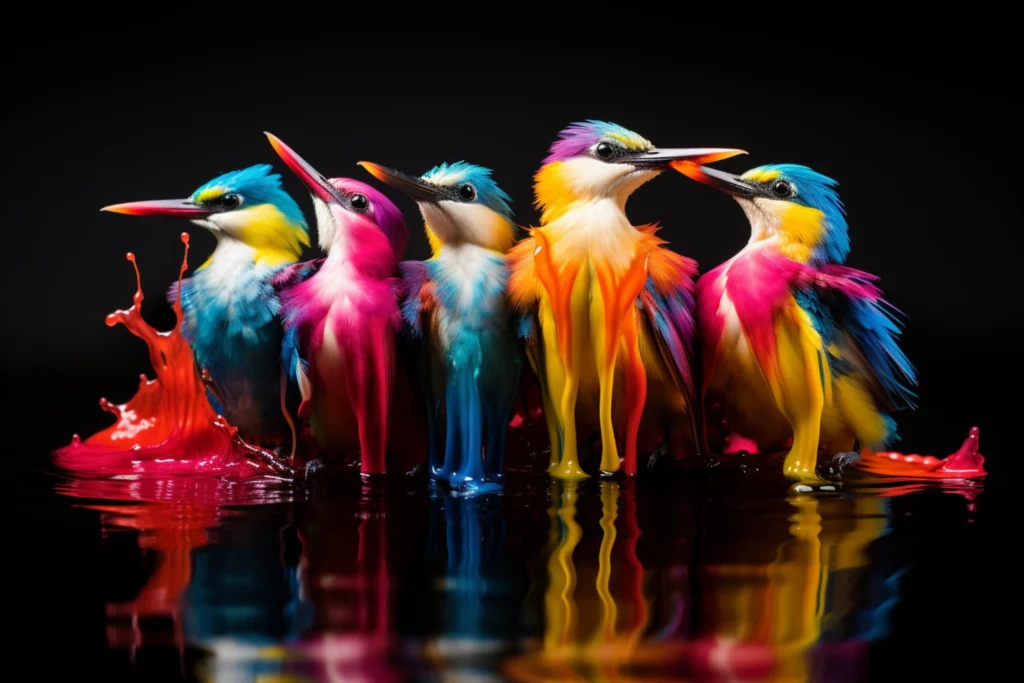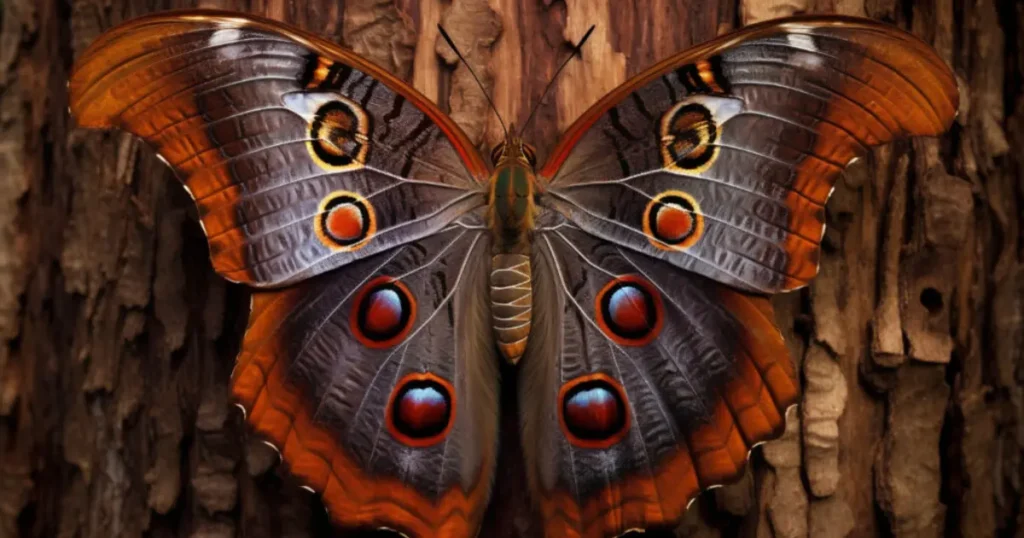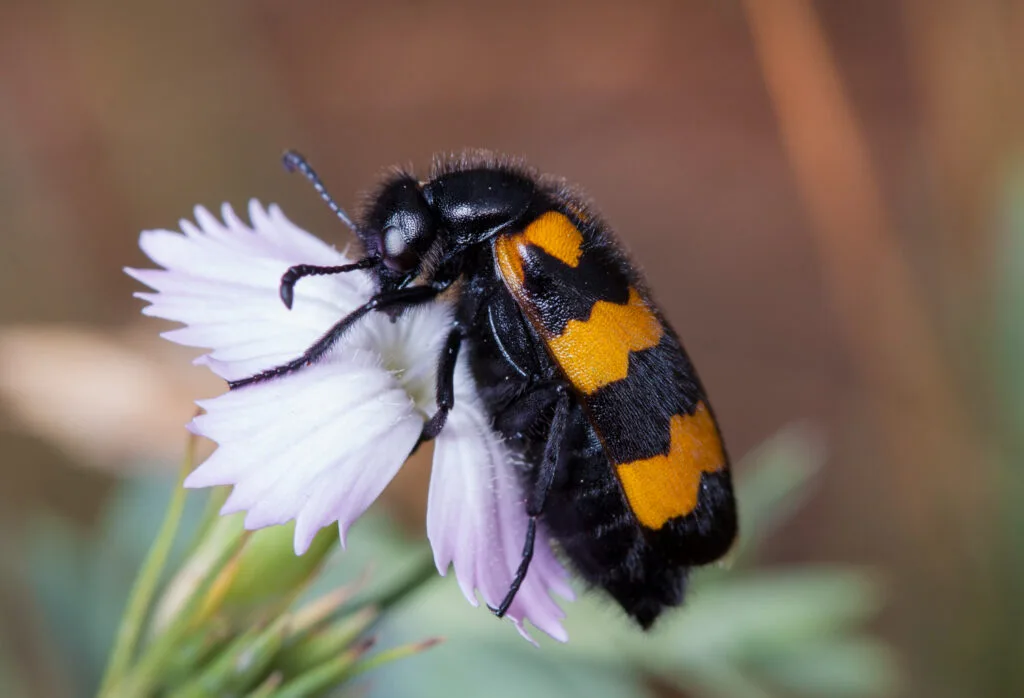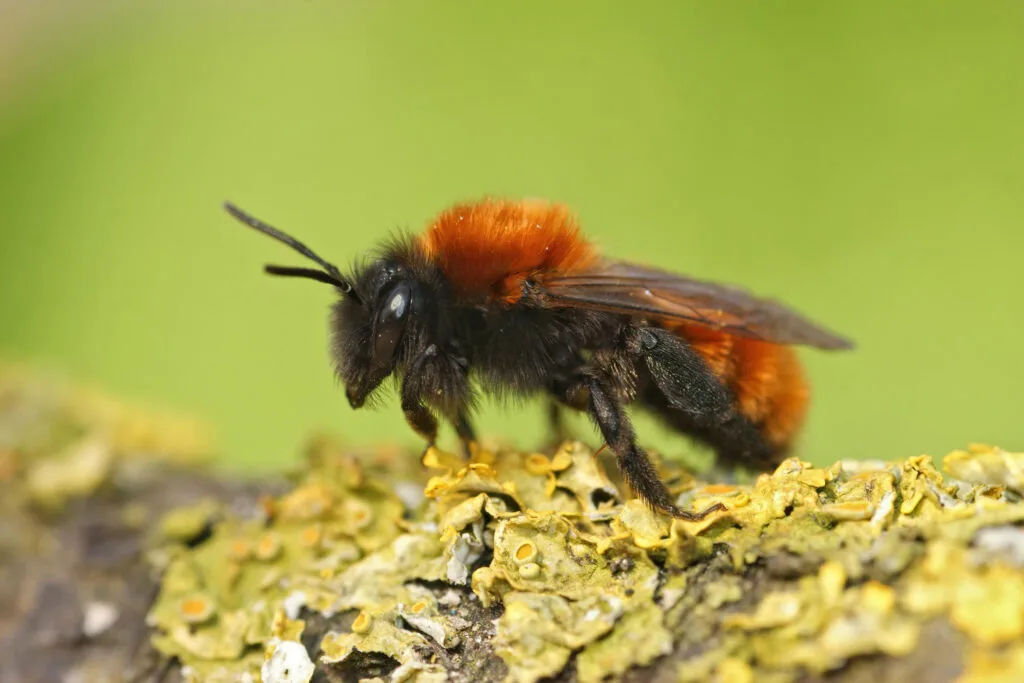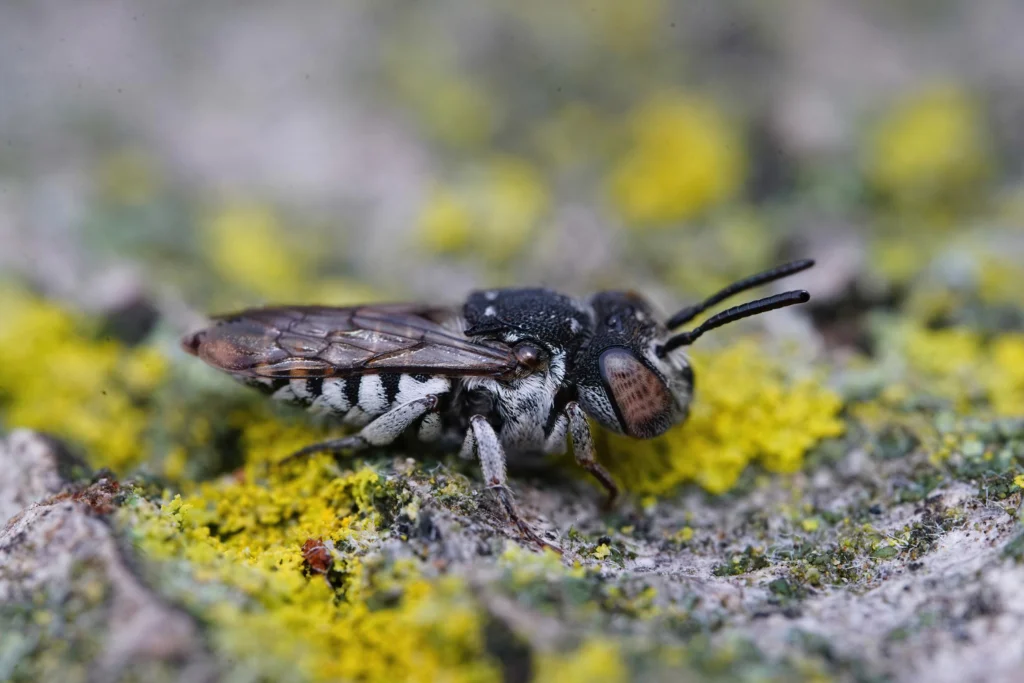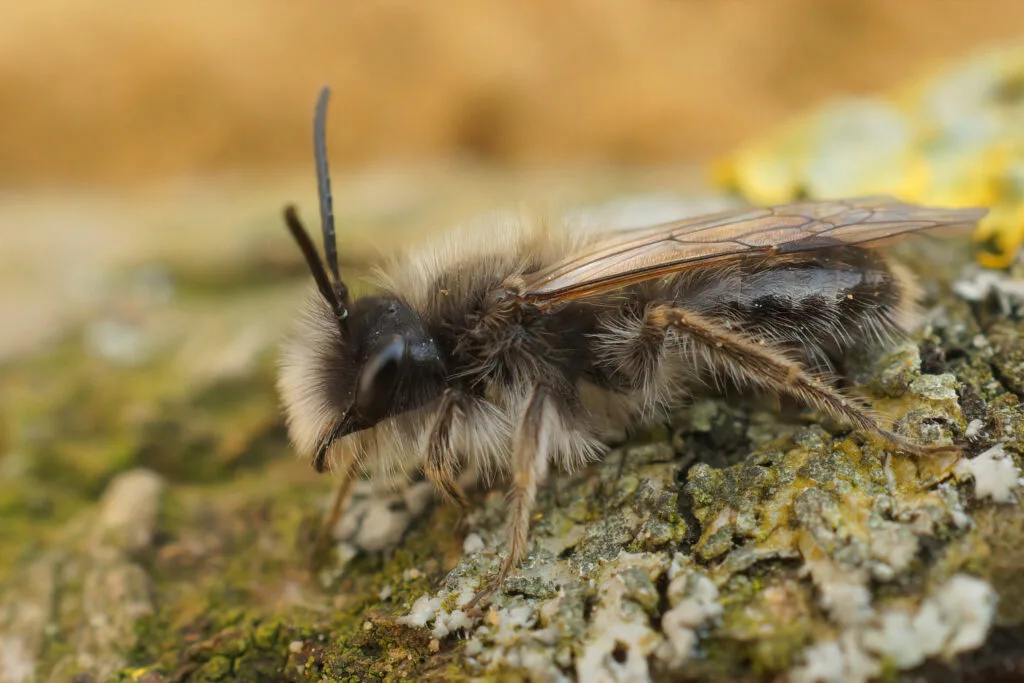Nature is filled with awe-inspiring creatures, but colourful birds take beauty to a whole new level. These avian wonders showcase a wide spectrum of shades—bright blues, radiant reds, neon greens, and iridescent purples—displaying plumage that would make any rainbow blush. Whether they thrive in lush rainforests, open savannas, or tropical islands, colourful birds are captivating not just for their looks, but also for their behaviours, songs, and roles in the ecosystem.
This complete guide explores eight of the most vibrant colourful birds from around the world, providing detailed insights into their habitats, lifestyles, and conservation efforts to protect them.
Table of Contents
ToggleUnderstanding Colour in Birds

Before we jump into the list, it’s helpful to understand what makes these birds so vibrant. Bird colours come from two sources:
- Pigments: These include melanins (brown/black), carotenoids (yellow/orange/red), and porphyrins (red/green).
- Structural Colouration: This is the way feathers reflect and scatter light, often resulting in iridescent or shimmering effects like those seen in hummingbirds or peacocks.
The combination of pigment and feather structure leads to the dazzling appearance of the world’s most colourful birds.
1. Scarlet Macaw – The Jungle’s Jewel
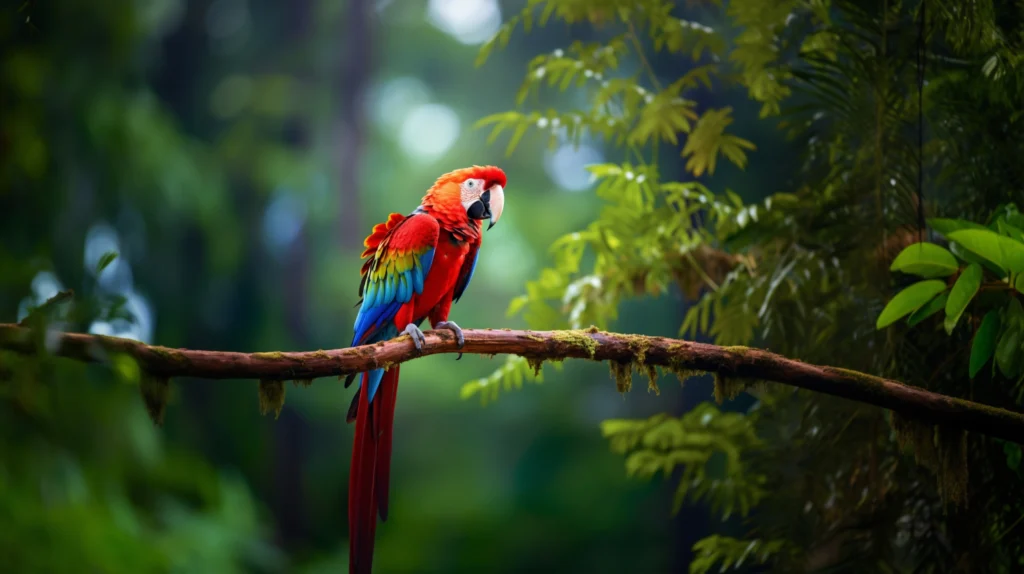
Scientific Name: Ara macao
Location: Amazon Rainforest, Central America
Scarlet Macaws are one of the most well-known colourful birds globally, with their vivid red, blue, and yellow feathers. These parrots are highly social, often flying in flocks, and their powerful beaks are capable of breaking hard nuts and seeds.
Conservation Note: Habitat loss and illegal pet trade have made them vulnerable in certain areas, although protected in many national parks.
2. Indian Peafowl – The Dancer of the Forest
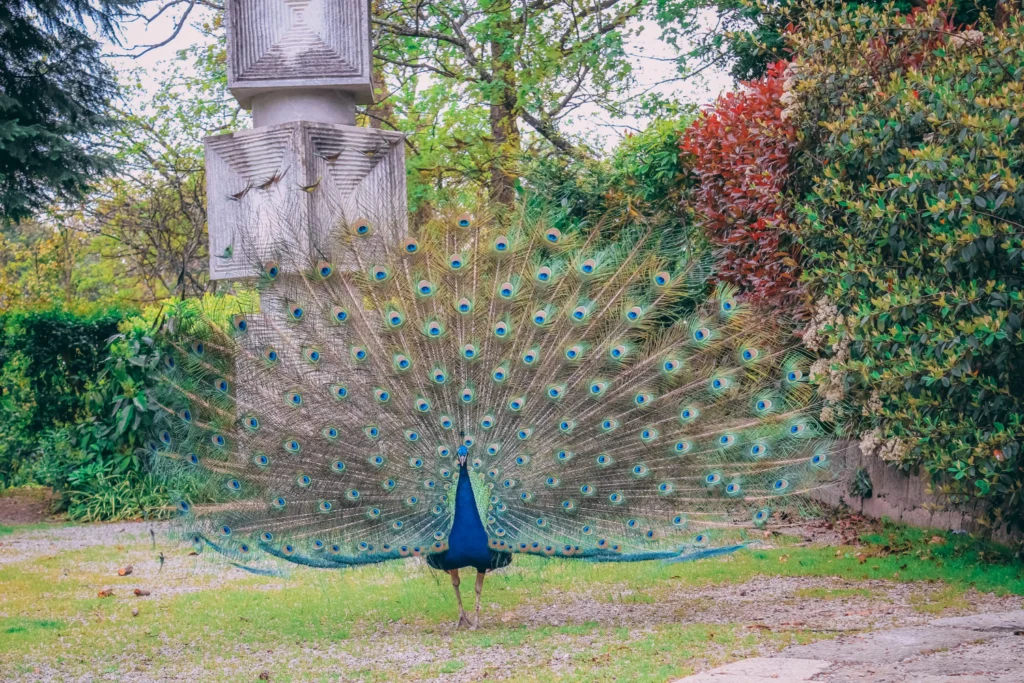
Scientific Name: Pavo cristatus
Location: India, Sri Lanka, Nepal
Peacocks are among the most striking colourful birds, best known for their dramatic courtship dance, where the male fans out a metallic green and blue train of feathers with eye-like spots. Peafowl are ground-dwelling omnivores that forage on seeds, insects, and small creatures.
Cultural Significance: The Indian peafowl is India’s national bird and is considered a symbol of beauty and pride.
3. Lilac-breasted Roller – Africa’s Rainbow Bird
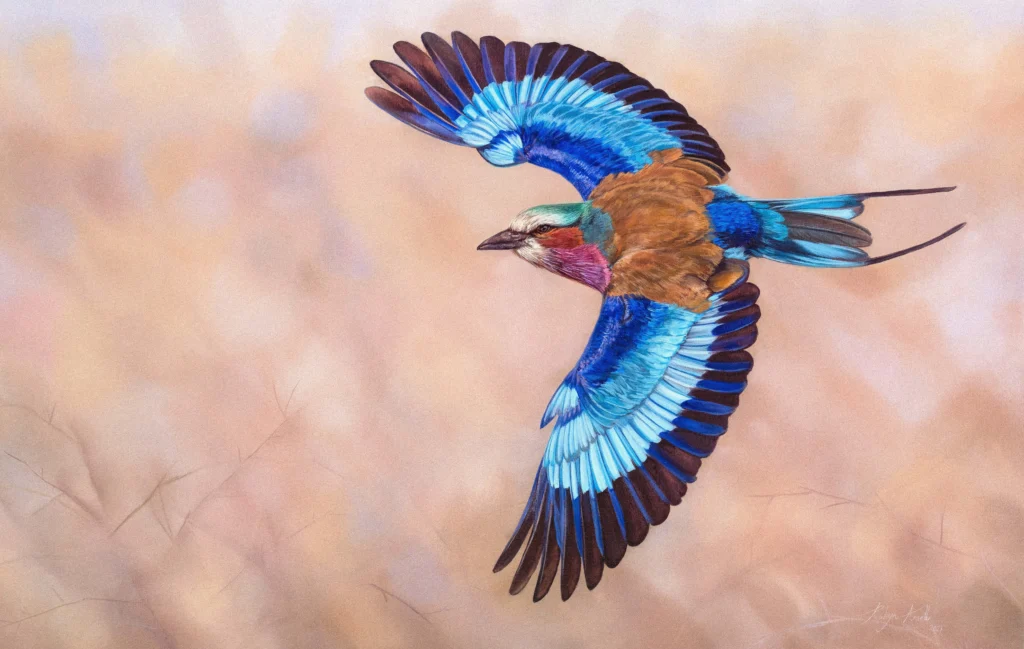
Scientific Name: Coracias caudatus
Location: Sub-Saharan Africa
This bird’s pastel-coloured plumage includes hues of lilac, turquoise, green, and white. Their flight pattern is also a delight—graceful rolls and dives that give the bird its name. Despite its tropical appearance, it thrives in dry savannahs and woodlands.
Behavioural Note: They are fiercely territorial and often perch on tall trees or poles to scan for insects.
4. Hyacinth Macaw – The Gentle Giant
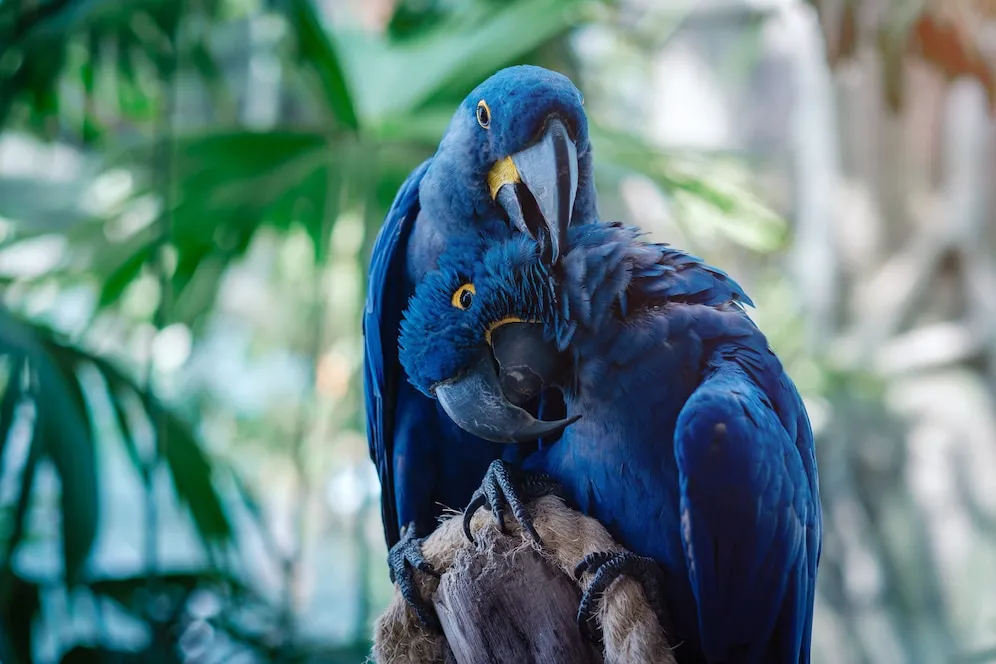
Scientific Name: Anodorhynchus hyacinthinus
Location: Pantanal region of Brazil
With their striking cobalt-blue feathers and yellow accents, Hyacinth Macaws are the world’s largest parrots by length. These colourful birds are not just beautiful but also intelligent and affectionate, making them sought-after (illegally) in the exotic pet market.
Diet: Specialised to eat palm nuts with an incredibly strong beak.
Conservation Status: Endangered due to habitat destruction and poaching.
5. Splendid Fairywren – A Tiny Bolt of Blue
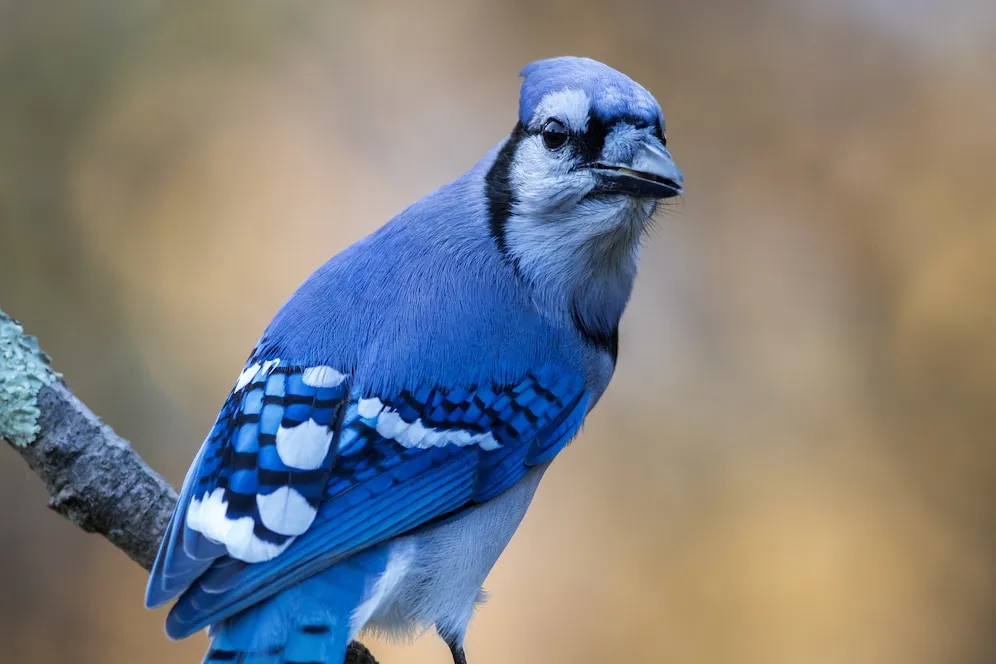
Scientific Name: Malurus splendens
Location: Australia
Males of this species undergo a magical transformation during mating season, turning a brilliant sapphire blue. These wrens are highly social and often live in small cooperative groups. Despite their delicate appearance, they’re highly adaptive to various environments.
Interesting Fact: They often carry petals or leaves as ‘gifts’ to impress potential mates.
6. Gouldian Finch – The Rainbow Finch
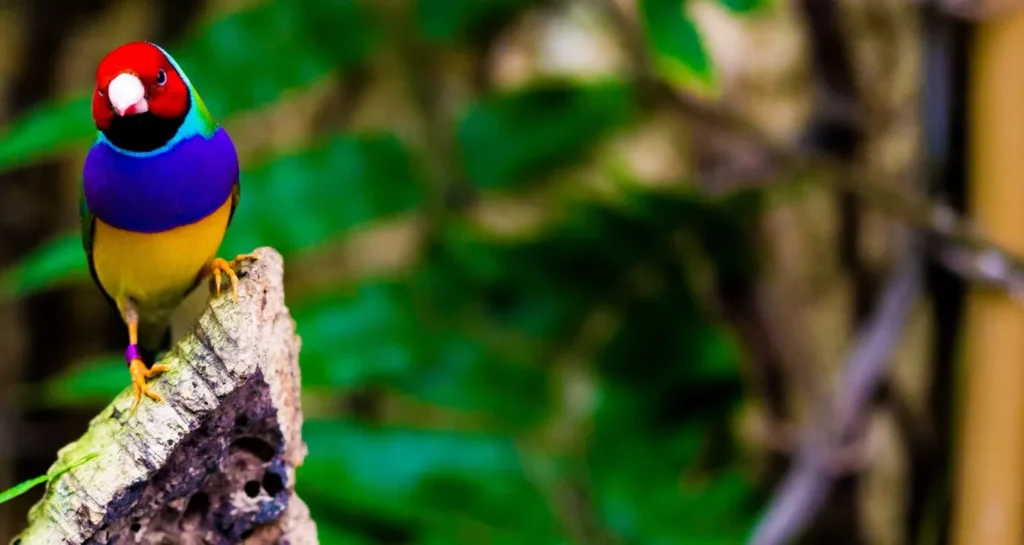
Scientific Name: Erythrura gouldiae
Location: Northern Australia
The Gouldian Finch is a stunning mix of red, green, blue, and yellow, and its head colour can vary based on genetics. These peaceful colourful birds are seed-eaters and prefer savanna woodlands.
Status: Near Threatened due to declining wild populations, although widely bred in captivity.
Breeding Note: They need very specific humidity and temperature ranges to breed successfully in the wild.
7. Resplendent Quetzal – The Sacred Bird of Mesoamerica
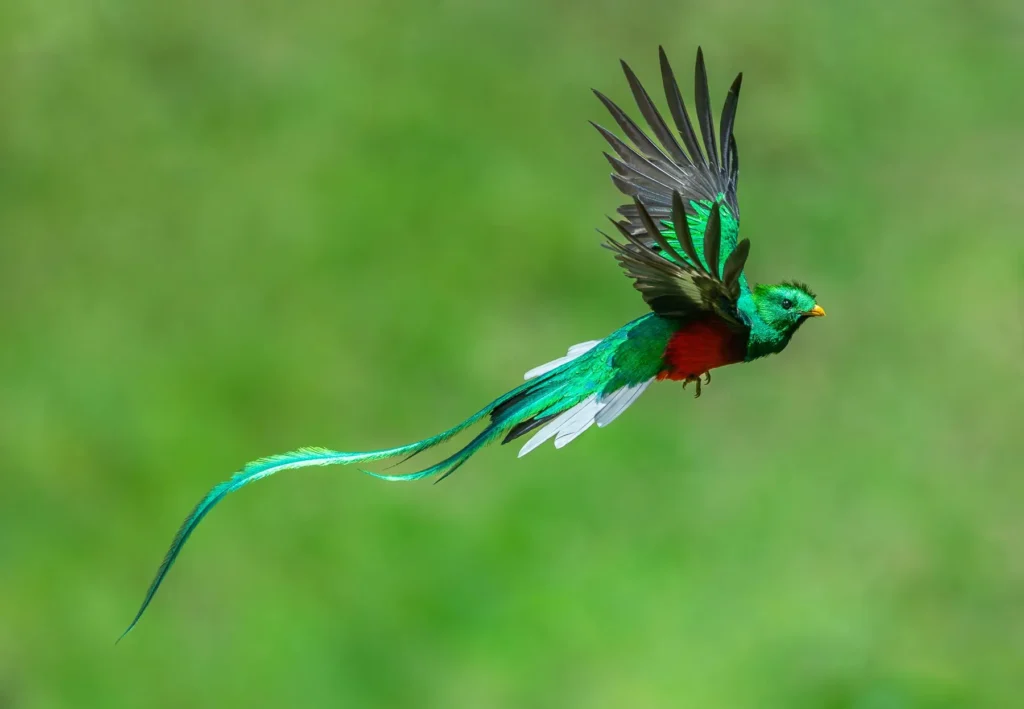
Scientific Name: Pharomachrus mocinno
Location: Cloud forests of Central America
The Quetzal’s shimmering green and crimson feathers, along with its elongated tail, make it one of the most revered colourful birds. It’s shy and hard to spot, often hiding high in the canopy.
Historical Role: The Quetzal was sacred to the Aztecs and Mayans, who believed it symbolised the spirit and freedom of the forest.
Diet: Mostly fruits, particularly wild avocados, and small insects.
Interesting Fact: They often carry petals or leaves as ‘gifts’ to impress potential mates.
8. Mandarin Duck – Nature’s Artwork

Scientific Name: Aix galericulata
Location: East Asia, UK (feral populations)
Mandarin Ducks are living paintings. Males have orange sails, green crests, white eyebrows, and striking contrasts in their plumage. They prefer calm woodland lakes and ponds.
Behaviour: Shy by nature, they’re often seen swimming in pairs. Outside the breeding season, males lose their bright colours and resemble females.
The Role of Colourful Birds in Ecosystems
Beyond their beauty, colourful birds serve important ecological purposes:
- Pollinators: Birds like hummingbirds help in pollinating tropical plants.
- Seed Dispersers: Fruit-eating birds aid in spreading plant species.
- Insect Control: Many bright birds feed on insects, keeping pest populations under control.
Birds are also vital indicators of environmental health—declines in bird populations often signal broader ecosystem issues.
1: Which bird is the rarest among these?
The Resplendent Quetzal and Hyacinth Macaw are both considered rare due to habitat loss and low population numbers.
2: Why are male birds usually more colourful than females?
In most species, males use bright colours to attract mates, while females have duller colours for camouflage during nesting.
3: Can I spot these birds in the wild?
Yes, but many are in protected reserves. Ecotourism in Costa Rica, Australia, and Africa provides ethical opportunities for sightings.
Conclusion
From the dense rainforests of the Amazon to the woodlands of Australia, the diversity of colourful birds is a testament to nature’s brilliance. Each species, unique in its plumage and behaviour, plays a vital role in its ecosystem. While their beauty makes them highly admired, it’s also a reminder of our responsibility to protect their habitats and prevent their extinction.
Whether you’re an aspiring ornithologist, photographer, or simply a nature lover, exploring the world of colourful birds is a journey into the most vivid parts of our planet. Let’s cherish and preserve their existence for generations to come.

